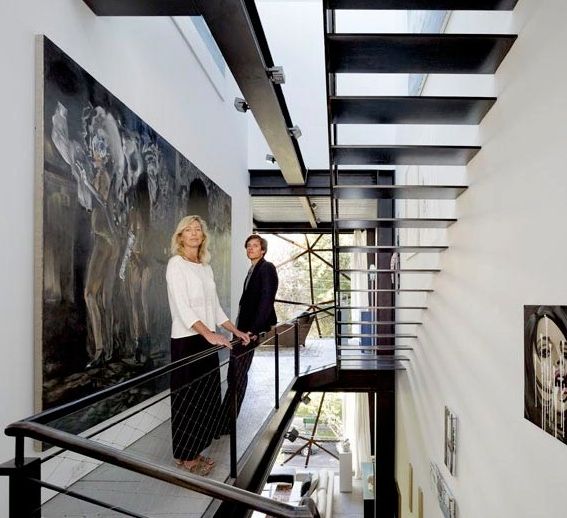Forward-thinking architects face an uphill battle in San Francisco, which is known for strict historical mandates when it comes to new construction. But it’s this same old city that inspired Zoë Prillinger and Luke Ogrydziak, a team of modern architects who are ushering in a new era of tech-friendly Bay Area architecture before our very eyes.
“Part of why we came here was a certain architecture scene that was really alive in the ’70s. It seemed inevitable this would become the center again,” says Ogrydziak. So in 2000, the pair, who studied at Princeton University, founded their firm Ogrydziak/Prillinger Architects (aka OP/Arch) here, confident that Northern California will someday be reborn as a hub for architectural design. The way they see it, SF allows them to flex their creative muscle in ways not afforded to them in other cities. “There is a sense of more freedom in terms of a less-established contemporary discourse,” says Prillinger. “We obviously bring our set of interests with us, but then there is the environment, the landscape, spectacular sights, art—which is important in architecture—good provocations.” Such inspiration has incited the pair to create geometric buildings that look like more like sculptures than livable homes. And the world is taking notice.
Take their best-known project, Gallery House, as case in point: The contemporary structure, on South Park in SoMa, is a house that doubles as an exhibition space, complete with a roof garden filled with sculptures by Kiki Smith. Gallery House brought home a 2011 honor award from the SF American Institute of Architects, and the project has been published in more than 20 international journals.
But it would be presumptive to think that Gallery House is emblematic of the couple’s work: They believe that each project has a unique solution and thus they approach each one differently—considering the possibilities for a specific site and how to incorporate the personality of the client. This makes OP/Arch all but impossible to pigeonhole. And that is exactly how they like it. For instance, a house built on the beach (Dune) seems to blend right into its atmosphere, albeit in a Star Wars sort of way, while a home in the city called Honighaus (not pictured) is almost camouflaged in its urban surrounds—from the street, you might not even notice it.
The skill for camouflaging comes naturally to Prillinger and Ogrydziak, especially when reimagining existing structures. In the past few years, OP/Arch has gut-renovated three structures, including 1201 California Street (a doorman building on top of Nob Hill), while keeping the buildings’ exterior shells intact. Currently in the works is the transformation of a 1920s parking garage into a high-end apartment complex. “It’s like a giant palazzo right in the middle of Russian Hill, with a kind of scale and heaviness you just don’t see anywhere else in this neighborhood,” says Prillinger, herself a Russian Hill resident who knows it’s important to “play up the strengths and the romance of the existing building.” This translates to clean, minimal lines with abstract details, while keeping with the open loft-like vastness of the original building.
As for erecting the future San Francisco, OP/Arch is just warming up. The principals share a strong belief that modern architecture has a rightful place beside the city’s storied Edwardians and Victorians. “If you look at models of successful cities in the world, they find a way to reconcile the old and the new. Ironically, it is some of the most beautiful historical cities that have the best contemporary architecture. They are not frozen in time,” says Ogrydziak.
For her part, Prillinger sites the 2005 renovation of the de Young Museum, recalling residents’ initial protests—“It was like, ‘Oh, these terrible Swiss architects, this monstrosity’”—and then the museum’s ultimate success. The de Young’s architects, Herzog & de Meuron, are “among the top architects in the world,” she says. “[The de Young] has permeated people’s sensibility because it set the bar at a completely different level.” But because this is San Francisco, after all, people will protest. Optimistically, Ogrydziak points to the Bay Area’s obsession with technology, which he thinks will eventually manifest itself in a more physical way.
“The reason tech is here and people are excited to be here is this feeling that we are living in the future,” he says. “At some point, the built environment will catch up. People who are smart will get bored.” In their ongoing attempt to keep things interesting, OP/Arch is taking on yet another historic renovation: the redesign and significant expansion of the South End Rowing Club. Built in 1873, it is one of the oldest athletic clubs in the western US. Look for its completion in 2014.
This article was published in 7x7's November issue. Click here to subscribe.
Related Articles
